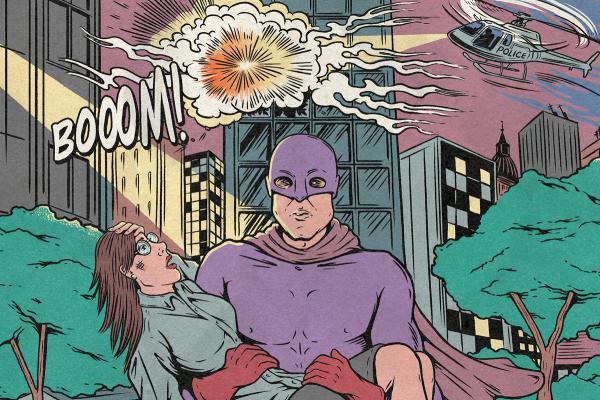EVER SINCE I was little, my imagination has been shaped by superhero worlds, lore, and comic and animated adaptations. And while more “realistic” adaptations are the trend on the big screen, what enthralled me about characters such as Batman wasn’t that I thought he could be real; I was tuned instead to the ethos behind the caped crusader.
Superhero stories often seem limitless. At their best, they stretch the imagination to ask what type of world we want to exist and what it would take to get us there, while acknowledging hardships along the way.
Recently, I began a rewatch of the DC Animated Universe: TV shows, feature films, and shorts that aired mainly from 1992 to 2006. These shows were the first to capture my attention and shape my imagination. Batman: The Animated Series was my first love, with Kevin Conroy’s Batman and Mark Hamill’s Joker seared into my consciousness. As I watched, I made a particular note about the moral imagination of these shows: Superheroes in these shows don’t just refuse to kill — a theme recurring across superhero worlds — they refuse to even let anyone die.
Take Season 1, Episode 11 (S1 E11) of Superman: The Animated Series: Lex Luthor’s weapons factory is about to explode, with spilled molten metal splashing about. Lana Lang is hanging by a thread above certain death; so is Lex Luthor, who unintentionally caused this mess in his attempt to kill Superman. But then, at the last moment, Superman bursts forth from under the molten waves, crashing out of the top of the factory just before it explodes, with Lana in one arm and the villain in the other.
It’s a scene that strains credulity. There’s an improbability of timing, a lack of “logic” in doubling back for the person trying to kill you, and the storyteller’s refusal to explain how Superman managed to save the villain. But what’s key here is the insistence, and flaunting, that Superman would save the villain. It doesn’t need an explanation; it’s assumed.
For a while, I was paying attention to how the writers made this subtext believable. Superman saves some villains in hopes they can be rehabilitated, others because they are being used by larger, more villainous characters. Why? The simple answer is that these were shows for families and children. The same reason the comic book’s “League of Assassins” became the TV show’s “Society of Shadows” and villains set out to “destroy” rather than “kill” heroes.
But this death-resisting subtext becomes dialogue in S2 E9 of Superman: The Animated Series when some kids plead with Metallo, a villain disguised as a hero, to save Lois Lane from an exploding volcano. “Superman wouldn’t let anyone die, no matter how bad they were,” the kids protest. “I’m not Superman,” Metallo retorts.
Read the Full Article

